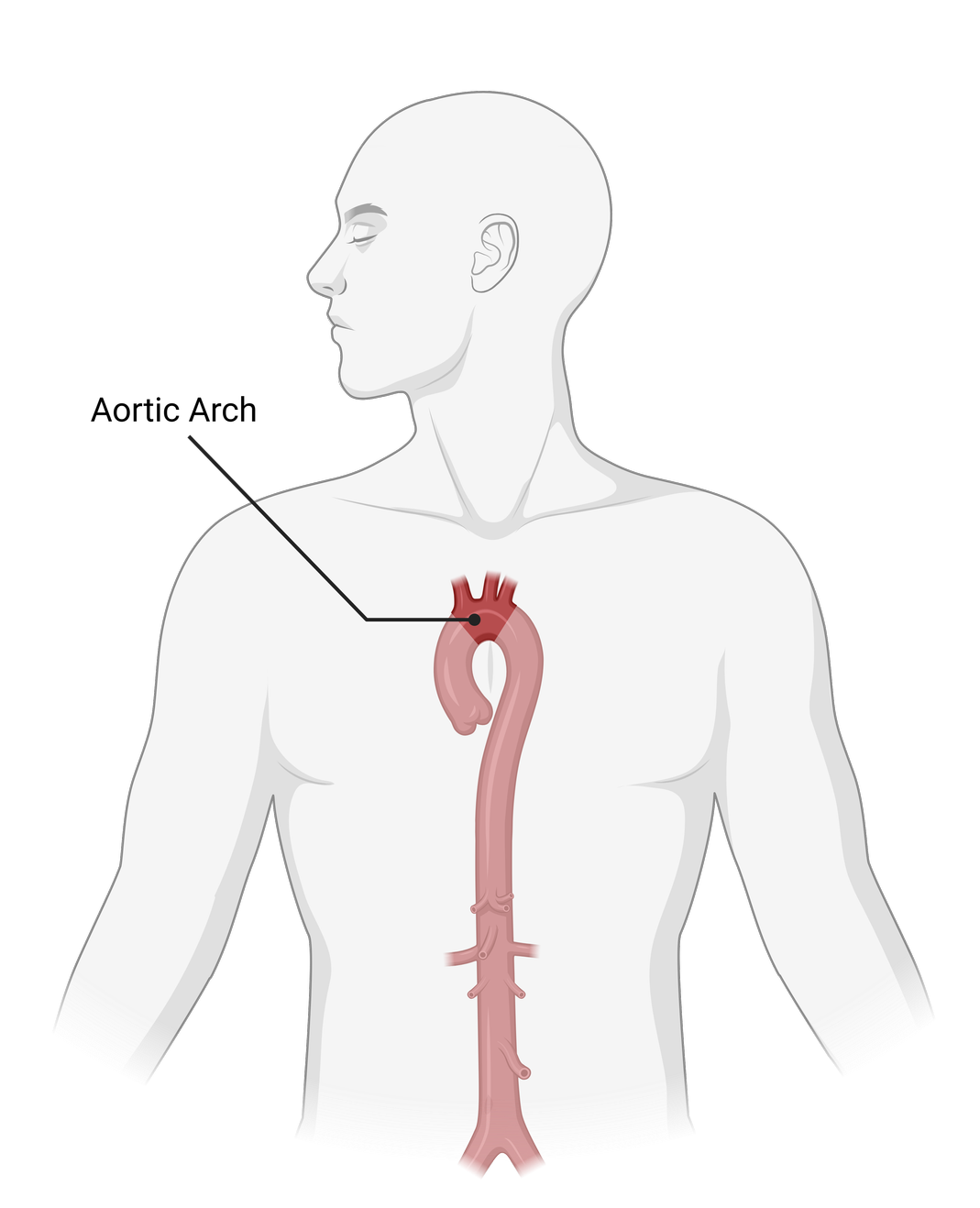Aortic Arch
Overview
The aortic arch is one of the most important bends in your body’s blood highway. It curves like a bridge over your heart, connecting the ascending aorta (the area coming straight from the heart) to the descending aorta (running down through the chest). Thanks to this shape, it’s able to send oxygen-rich blood quickly to the upper body.
Branches to the Brain and Arms
From this bridge-like curve, three major arteries branch off:
The brachiocephalic trunk goes to your right arm and the right side of your head and neck.
The left common carotid artery travels up to supply the left side of your head and neck.
The left subclavian artery carries blood to your left arm.
Because of these branches, the aortic arch is essential. It ensures a steady supply of blood to your brain, face, arms, and much of your upper body every second.
Size and Health
A healthy aortic arch measures about 2.0–3.5 cm in diameter in adults. Its strong, elastic walls help it handle the power of each heartbeat, so blood flows smoothly and reliably to where it’s needed most. Keeping this arch healthy is vital. Weakness or disease in this area can affect blood flow to the brain and lead to serious problems.
When the Arch Gets Sick
Several conditions can affect the arch, such as aneurysms (ballooning), dissections (tearing inside the wall), and hardening of the arteries (atherosclerosis). Diseases here can disrupt vital blood flow and need special attention. You can read more about these issues in other chapters on this website.


